Zeytin Yağı Üretim Aşamaları
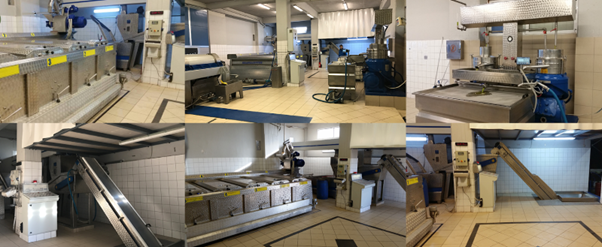
This post is also available in:
Bu makale şu lisanlarda da mevcuttur:
![]() English (İngilizce)
English (İngilizce) ![]() Français (Fransızca)
Français (Fransızca) ![]() Deutsch (Almanca)
Deutsch (Almanca) ![]() हिन्दी (Hintçe)
हिन्दी (Hintçe) ![]() Ελληνικά (Yunanca)
Ελληνικά (Yunanca)
Oil extraction refers to all the processes that the olive fruit is subjected to in order to produce the final product, olive oil. From the transportation of the olive tree to the olive mill to the receipt of the final product, we encounter the following stages:
- picking up the olive fruit
- leaf destruction
- Washing
- Crushing (milling)
- Laxation
- Separation of olive oil from olive paste
- final separation
picking up the olive fruit
Obviously, the residence time of the olive fruit in the olive mill before processing should be minimized as much as possible to avoid any spoilage.
leaf destruction
Generally, the removal of the leaves is essential because the quality of the olive oil deteriorates when crushed together with the fruit. For example, while it tastes bitter, the large amount of chlorophyll present at the same time enhances the oxidation of oily matter through photooxidation. However, according to recent studies, it has been found that the presence of a small number of leaves (about 3%) not only does no harm, but can also have a positive effect on the final product. More specifically, it enriches olive oil with phenols that act as antioxidants, increasing its resistance to oxidation in the absence of light.
Washing
Washing is absolutely necessary because it removes impurities (such as soil) and pesticide residues. Unfortunately, these residues are present in the fruit due to incorrect spraying before harvest and failure to comply with the minimum time since the last spraying as recommended.
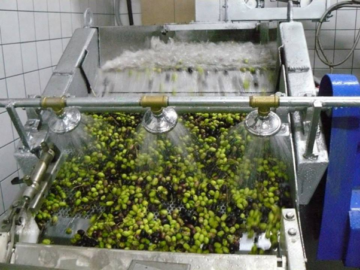
A photo from the oil mill where the “Spiliotopoulos Family” olive oil is produced
Crushing (milling)
It is the first main stage of processing the olive fruit.
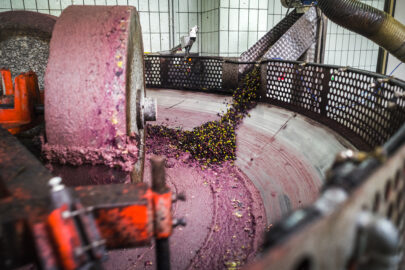
Making Extra Virgin Olive Oil in Mola di Bari, Puglia
In conventional olive mills, crushing takes place in olive mills. Of course, centrifugal mills have almost completely replaced conventional oil mills in most regions. In addition to these, developed classical type metal crushers (hammer mills) are used.
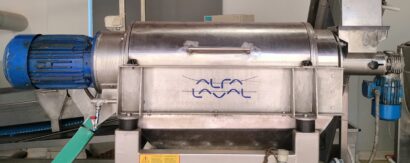
These metal crushers have advantages over oil mills as they are smaller in size and cost, have higher efficiency and are easier to clean. However, their main drawback is that olive oil is often loaded with traces of metal.
A general principle is that the crushing should be done on low speed machines, because at high speeds the temperature of the olive paste also increases, causing emulsion formation.
Malaxation ( Kneading )
It is the most basic stage, because in this way the oil droplets merge with the larger olive oil drops. This combination is particularly important for the subsequent separation of olive oil from vegetable liquids. If the kneading time is extended, emulsions are formed and therefore this separation becomes difficult.
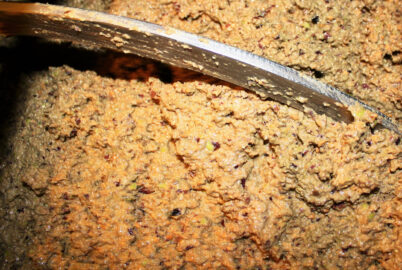
Olive paste in a malaxation tank during the olive oil extraction process at an olive oil factory in Greece.
Oxygen contact of olive paste should be avoided in order to limit the loss of flavors and at the same time to initiate oxidative souring. It is also possible that even a small amount of air trapped in the product may cause oxidation later, during storage. At the same time, it is important to avoid temperatures above 27 °C, as otherwise an undesirable reddish color is formed while the volatiles are destroyed. Malaxation in the nitrogen atmosphere increases the concentration of antioxidants.
The cold pressing technique (temperatures below 27°C) helps preserve both the nutrients (such as Vitamin E) and organoleptic properties of the final product.
The separation of olive oil from olive paste can be done in the following ways:
- Centrifuge
- Filtration
Each method is characterized by certain comparative advantages and disadvantages. Pressing as a separation method is characterized by its low cost and the energy economy it offers. At the same time, only a little moisture and a small amount of olive oil remain in the olive pit at the end of the process. However, it is not a continuous process, bearing high labor costs and residual oil paste in the plains, and olive oil spoils as a result.
Santrifüjlemenin başlıca avantajları, otomatik çalışması ve yukarıda bahsedilen ovucuların olmamasıdır (bu nedenle bozulmadan kaçınılır). Bununla birlikte, santrifüjleme maliyeti oldukça yüksektir ve bir işlem olarak enerji yoğundur. Ayrıca çok fazla su kullanıldığında fenoller kaybolur ve yüksek sıcaklıklar uygulandığında aromatikler kaybolur. Son olarak, zeytin çekirdeğinde büyük bir nem yüzdesi korunur.
Ayırma yöntemi olarak sızma kullanıldığında, zeytin meyvesinin aromatik ve fenolik bileşenleri nihai ürüne (zeytinyağı) geçer. Bu özel yöntemin bir diğer avantajı, tam otomatik bir şekilde çalışmasıdır. Bununla birlikte, tüm zeytinyağı miktarını toplamak için santrifüjleme de gerektiğinden, bu daha zaman alıcı bir işlemdir. Son olarak, ekipmandaki bıçakların varlığı temizlemeyi zorlaştırırken, makinenin geniş yüzeyleri oksidasyonun gerçekleşmesini kolaylaştırır.
Son ayıklama – Zeytinyağı filtreleme
Bu aşamada kullanılan makine yağ ayırıcıdır. Ayrımın başarısı, zeytinyağının özgül ağırlığı, zeytinyağı damlacıklarının şekli ve boyutları, viskozitesi ve sıcaklığından etkilenir. Özgül ağırlıklarındaki fark arttıkça bileşenleri ayırmanın daha kolay olduğu açıktır. Aynı zamanda, zeytinyağı damlacıkları ne kadar büyükse ve sıvı fazın viskozitesi ne kadar düşükse, ayırma o kadar kolay olur. Sıcaklık ile ilgili olarak, ne kadar yüksek olursa, ayrımı o kadar çok desteklediği doğrudur, ancak ürünün kalitesini düşürür.
Zeytinyağının ekstraksiyonunu kolaylaştırmak için birkaç araştırmacı tarafından test edilen bir teknik, pektinolitik enzimlerin kullanılmasıdır. Zeytinyağının oksidasyon stabilitesinde bir artış ve uçucu maddelerde paralel bir artış gözlemlediler.
Finally, filters can be used as in the image below to protect the floats.
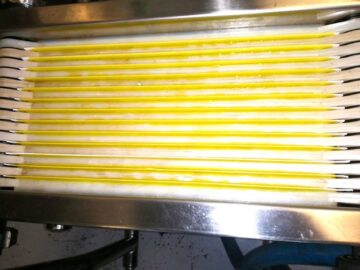
A photo of the olive mill where “Kleio” olive oil is produced
References
Kiritsakis, A., “Elaiolado”, CITY PUBLISH , Thessaloniki, 2007








































































